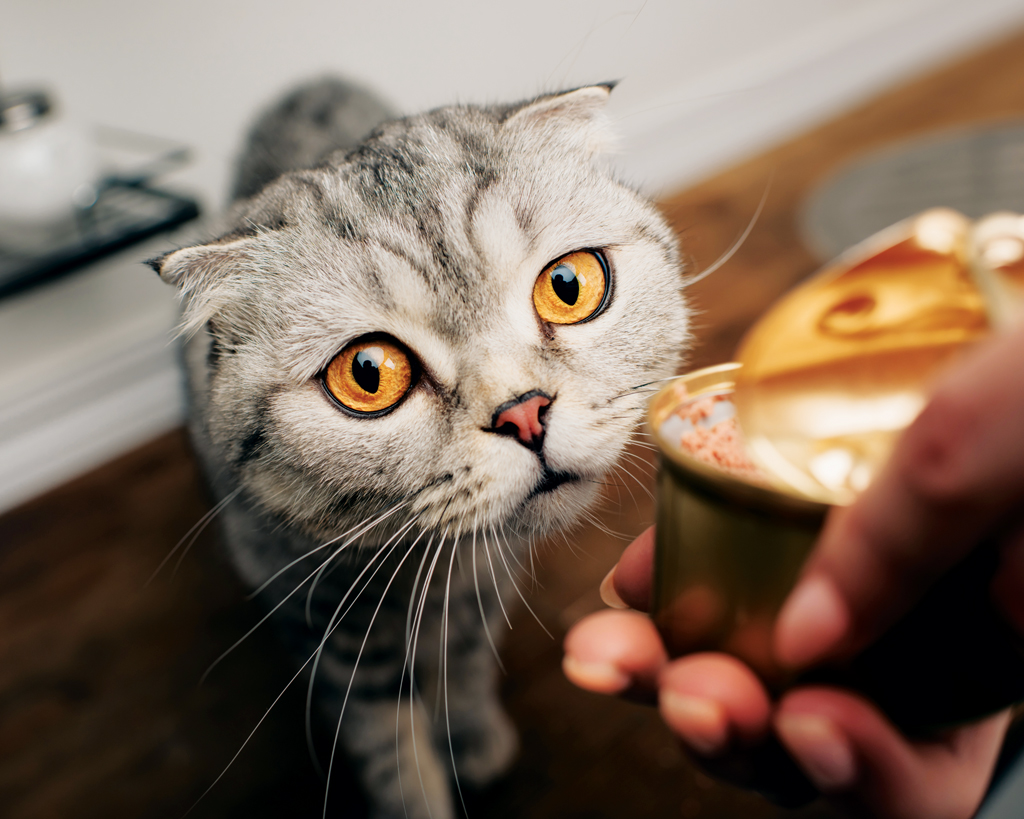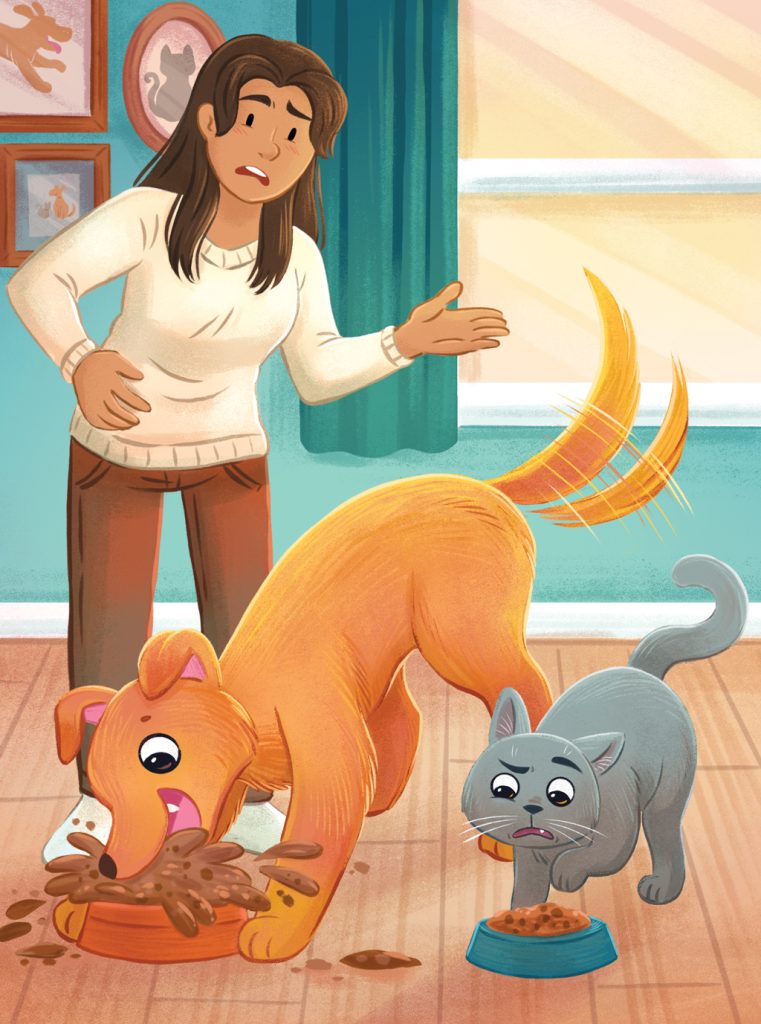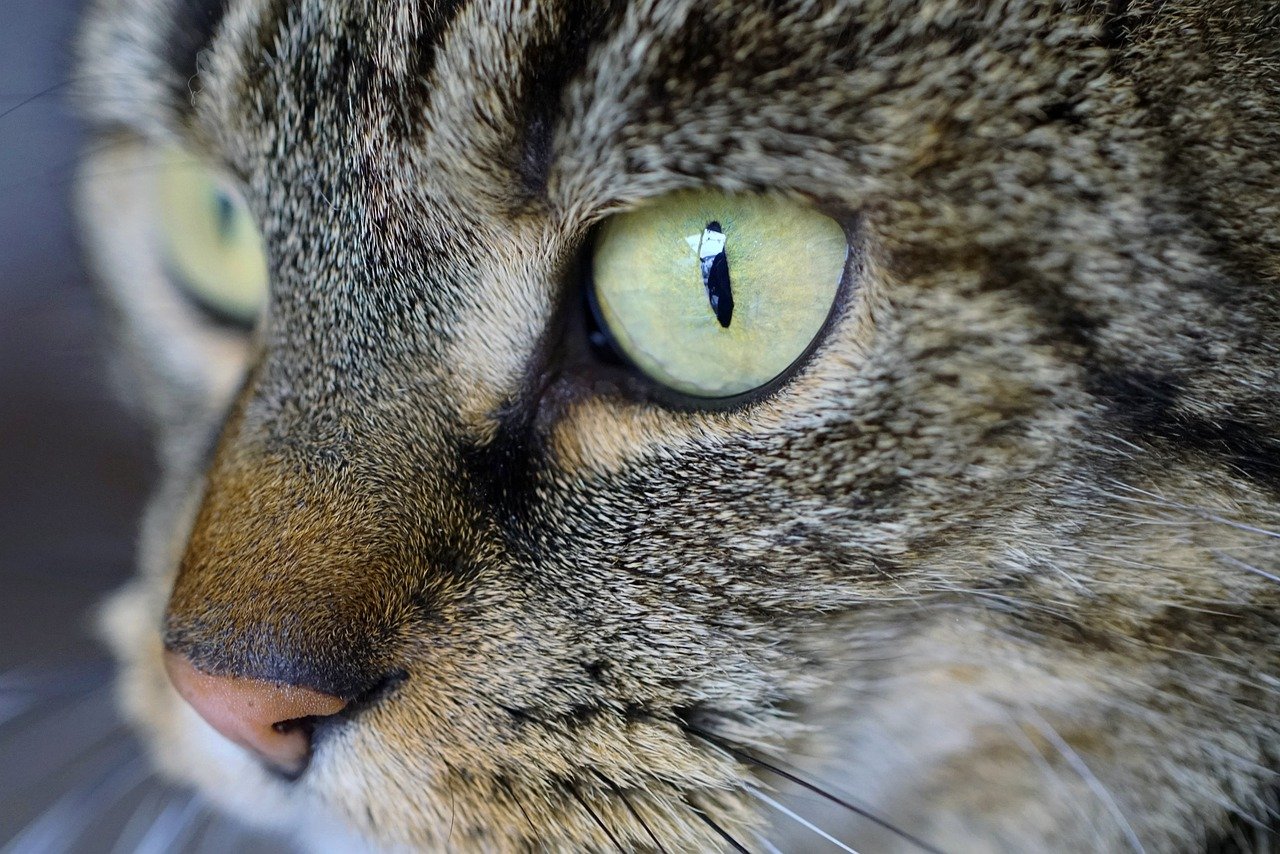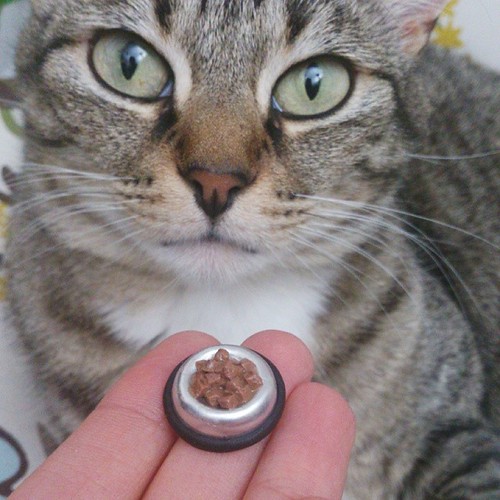Dietary differences
Why are our feline friends are so finicky compared to our not-so-discriminating dogs? If you’ve ever had to cajole your cat into eating that expensive gourmet meal you just bought while watching your dog happily devouring everything from kibble to—let’s be honest—things they really shouldn’t, you’ve undoubtedly pondered this conundrum.
It begins with their basic dietary needs. Daisy May, a veterinary surgeon in the UK, got into it in an article for Modern Cat that really breaks it down. Cats are obligate carnivores. That’s a fancy way of saying their bodies are designed to thrive on a diet that’s mostly meat. So much so that they need meat to stay healthy. This makes them part of a small elite group called hypercarnivores, sharing the title with some pretty cool animals like owls and sharks. Basically, if they could, my Luna and Felix would probably reenact a wildlife documentary right in my living room.
Why all this fussiness? May says cats have evolved to be extremely picky to ensure they get all the nutrients they need. It’s a survival instinct that keeps them from eating something that might not meet their dietary needs. So next time Luna snubs yet another can of cat food, I’ll just nod in appreciation of her finely tuned survival instincts.
Now consider our canine pals. Dogs are omnivores, meaning they can eat a balance of meat and plants. If it’s edible and vaguely smells like food, it’s fair game. That’s why you might catch a dog snacking on some highly questionable items. As another expert from the article, veterinarian Emma Fulton explains, dogs evolved as opportunistic scavengers. That means they had to learn to eat whatever was available to them, including some pretty gross stuff.
Dogs have a more robust digestive system that can handle these questionable food choices, thanks to their highly acidic stomachs and short digestive tracts. It’s basically like having an internal garbage disposal. This evolutionary trait makes them less discerning, so they won’t turn their nose up at a potential meal, including the occasional dirty sock or (gross) things they find during your walks.
Our cats are picky because they have specialized dietary needs that their bodies are fine-tuned to seek out. Dogs, on the other hand, have evolved to be less discerning eaters, ready to chow down on whatever might come their way, even if it’s something that makes us recoil in horror.
Taste preferences
Cats are pretty much the food critics of the animal world. They won’t just eat anything; they have some strong opinions about what’s on the menu. Unlike dogs, who often gobble up anything remotely edible, cats have a more refined palate. It’s science, folks!

So why do cats turn their noses up at what dogs and even we humans might find tolerable, or even delicious? It boils down to their taste receptors. Dr. Emma Fulton, a veterinarian from the UK, highlighted in the Modern Cat article that cats have a heightened sense of taste. Their bitter taste receptors are off the charts compared to those of dogs. This makes them super sensitive to bitter flavors, which is a nice way of saying they’re pickier than a toddler who only eats chicken nuggets.
This super-sensitivity to bitterness is a survival mechanism. Cats need to avoid foods that could be rotten or toxic. Imagine them prowling in the wild, sniffing out potential meals. A heightened sense of taste helps them distinguish between what’s good for them and what’s potentially harmful. Dogs, on the other hand, tend to scarf down anything, relying more on their sense of smell.
Speaking of smells, ever notice how your cat can sniff out the slightest hint of fish from across the room? My Luna could be in a deep nap, but as soon as I open a can of tuna, she’s there in a flash, eyes wide and tail flicking. This leads us to another interesting tidbit: cats don’t have the same receptors for sweetness that dogs and we humans do. Their taste buds are mainly tuned to meat and umami flavors, which probably explains why my cats ignore the fruit I sometimes offer them (just a fun experiment, not their actual diet!). Research shows that felines have a muted response to sweetness because one of their taste receptor genes (Tas1r2) is essentially non-functional.
Dr. Thompson’s study: The breakthrough study that examined this was published in PLOS/Genetics back in 2005. They discovered that while cats have the Tas1r3 gene for sweetness, their Tas1r2 gene is practically defunct. This genetic quirk makes them immune to the allure of sugary treats, which I guess is a bit of a bummer for anyone trying to entice their kitty with dessert.
What draws them in? The umami taste, which is the rich, savory flavor found in meats, cheeses, and even mushrooms. It’s like catnip for their taste buds! Speaking of which, my other cat, Felix, goes bananas for nutritional yeast. Once, while I was trying to whip up some homemade dog treats with it, Felix practically lost his mind trying to get at the yeast. I had to laugh at how he turned into a little food detective, pawing at the container until I finally gave him a taste. Who knew yeast would be such a hit?
Joshua Errett, the founder of Noochies! Cultivated Pet Food, shared a similar story in the article. His cats went bonkers for yeast, too. This umami explosion they crave is why their freeze-dried yeast treats have become so popular with both cats and dogs.
So, the next time your cat snubs their food bowl, remember they’re not just being difficult; their taste receptors are working overtime. They have this little laboratory in their mouths telling them what’s good and what’s not. It’s all part of their evolved survival instinct. In contrast, dogs are more like us when it comes to taste—embracing variety and even a bit of risk. It’s what makes our pets’ eating habits so fascinating!
Food routines
If you’re a cat owner like me, you’ve probably noticed how much our feline friends cherish their routines. My two cats, Luna and Felix, have their feeding times down to a science. They saunter to their bowls promptly at sunrise and sunset, expecting nothing less than their usual fare. Heaven forbid, I serve them anything different!
This behavior isn’t just adorable; it’s rooted in their nature. Unlike dogs, who might thrive on the adventure of trying new foods, cats cling to routine for comfort and security. Emma Fulton, a veterinary expert mentioned in the article, explains that abrupt changes in a cat’s diet can lead to finicky eating—or worse, a complete refusal to eat. For cats, food isn’t just nourishment; it’s a part of their daily rhythm.
Michael Thompson, another expert in the article, expands on this point by noting how creatures of habit our cats are. They develop daily habits around feeding, grooming, and playtime. Any disruption in these routines can cause them stress and anxiety. He perfectly captures why my Luna sprinted away from her bowl when I swapped her usual chicken pâté for salmon. It was as if I had committed an unspeakable crime!
In stark contrast, dogs appear to embrace new experiences, even in their meals. A dog’s evolutionary history as a scavenger has shaped them into more adventurous eaters. They’ve had to eat whatever they could find, even if it wasn’t the freshest option. Because of this, dogs like my friend’s golden retriever, Max, don’t think twice before gulping down yesterday’s leftovers or that mysterious morsel they found on the sidewalk. It’s all part of the adventure!
Thompson also highlights how a cat’s senses play into this routine-heavy preference. Cats are highly sensitive to new scents and environments. Just the faintest whiff of a new scent in their food can put them on edge, causing them to reject it outright. I remember when I tried to sprinkle a bit of a new flavor atop Felix’s kibble to entice him. He sniffed it once, gave me a disapproving look, and then proceeded to paw at his bowl as if to say, “What is this alien substance?”
From my perspective, understanding these behaviors is essential for us cat parents. It helps us empathize with their quirks and ensure they feel secure and happy in their eating habits. If you’ve ever been frustrated by your cat’s refusal to try new foods, remember it’s simply their way of navigating the world.
If you’re curious to explore more about how these routines affect your pets’ eating habits, I’d highly recommend reading the full article on Modern Cat here.
Sensory influences
Let’s dig into the sensory influences that make our cats and dogs so unique in their eating habits. If you’ve ever wondered why your cat gives new food the side-eye while your dog gobbles up everything in sight, it’s time to look at their sensory make-up.
First, let’s talk about smell. Cats have an exceptional sense of smell, but it’s not even as critical to them as it is to dogs. My Luna can sniff out the tiniest hint of tuna from another room, but her tongue does a lot of the tasting work. Feline taste is far more complex than canine taste, with their tongues having specialized receptors to detect what’s beneficial to them.
Joshua Errett from Noochies! Cultivated Pet Food shared a fascinating tidbit in the article. He said, “Cats have almost a little laboratory in their noses and mouths and tongues.” This means they can determine the specific amino acid profiles in their food, favoring savory, protein-rich items that meet their dietary needs. Remember how my Felix went nuts over nutritional yeast? That umami bomb was like a treasure trove for his little taste buds.
“Cats have a much stronger sense of taste than dogs thanks to having more bitter taste receptors. Foods that taste bland or even pleasant to dogs and humans can taste quite bitter and unappealing to cats,” Fulton says.
Contrast this with dogs, who largely rely on their acute sense of smell when choosing food. Dogs can sniff out anything from dirty sock remnants to a week-old sandwich in the most remote corner of your house—as Max often does at my friend’s place. Their noses lead them, while their taste buds are just along for the ride, less discerning and more accepting of what follows.
Interestingly, cats can’t taste sweetness at all. This stems from a genetic lack of receptors for sweetness, which explains why my attempts to share a bit of fruit with Luna usually end in a puzzled look. Their taste landscape focuses on bitterness and umami—this makes sense considering their instinctual need to avoid anything toxic or spoiled. That’s why Luna takes a cautious approach to new flavors, sticking with what’s familiar and tested.
Introducing new foods to cats is a delicate balance; you’ve got to factor in their sensory sensitivities. Even the most minor change in scent or texture can be off-putting. If Felix catches wind of a new scent, he’ll approach with caution, often walking away if it doesn’t pass muster. Dogs, on the other hand, might give it a lick and decide later if it’s worth their stomach’s trouble. Thompson, another expert noted in Daisy May’s article, captured this perfectly: unexpected changes can introduce unfamiliar scents or noises, making cats feel on edge.
Understanding these sensory differences not only helps in catering to our pets’ picky tendencies but also gives us a bit more patience when they seem impossible to please. Remember, it’s not just fussiness—it’s finely tuned survival instincts at work.
Intrigued about this sensory world our pets navigate daily? For more in-depth insights, make sure to check out Daisy May’s full article on Modern Cat here.
New food introduction strategies
When it comes to introducing new foods to cats and dogs, it can sometimes feel like a test of patience (okay, more like a marathon). As Mark Sapir from Open Farm hints, dogs are generally more go-with-the-flow in their eating habits. Give them a sprinkle of something extra on their regular meal, like freeze-dried treats or a bit of savory broth, and their enthusiasm often skyrockets.

But cats? They’re more like that one friend who only eats plain pasta and glares suspiciously at anything green on their plate. So, what’s the secret to getting a cat to try something new? According to Sapir, patience is your best ally. It’s all about taking baby steps and slowly introducing the new food while sticking with textures and flavors they already like.
Understanding these nuances firsthand, I’ve had my fair share of food experiments with Luna and Felix. I remember trying to introduce a new fish-based wet food to Luna. Initially, she gave it a sideways glance, then walked off in a huff. To ease her into it, I started mixing just a smidge of the new food with her current favorite. Over several days, I gradually increased the new food’s portion until she finally accepted it as part of her routine. And voilà! Success eventually came, but it took a lot of persistence and a boatload of patience.
Sometimes, though, cats can be surprisingly adventurous eaters—especially if they’ve been exposed to a variety of foods from a young age. Daisy May mentioned in the original article how cats might even pick up eating habits from observing each other or their human family members. Imagine your curious kitty trying out a bite of something they’ve seen you enjoying! My Felix once got interested in diced chicken I was prepping for a salad. His curiosity led to a taste, and now I have to fend him off whenever I open the fridge!
By contrast, the adventurous nature of dogs makes them naturally more accepting of new flavors. They’re less inclined to reject unfamiliar foods, especially if their nose approves of it first. Plus, dogs have evolved to be opportunistic scavengers, meaning their historical need to eat what they could find in ever-changing environments has made them much more adaptable. My friend’s golden retriever, Max, is a prime example. He’s always game for a new treat, and transitioning him to a fresh diet has never been a hassle. Open Farm’s chicken and beef flavors are his absolute favorites.
Thompson, another expert quoted in the article by Daisy, adds a crucial point that’s easy to forget when you’re in the thick of a feeding experiment: every pet is unique. Cats and dogs have individual personalities and histories that shape their food preferences. So, whether your pet is as adventurous as Max or as discerning as Luna, understanding their quirks and taking it slow can help create a positive and stress-free feeding experience.
If you’re dealing with a particularly fussy eater, keep experimenting and don’t lose heart. After all, our pets’ pickiness is just another layer of their endearing personalities. For more tricks and tips on navigating these culinary adventures, be sure to explore the complete Modern Cat article by Daisy May. You can read the full piece at this link.

